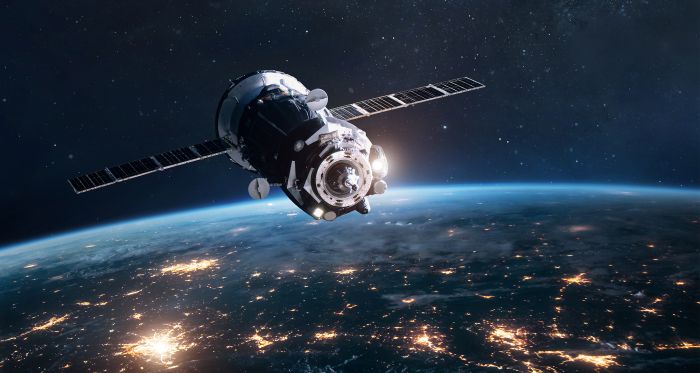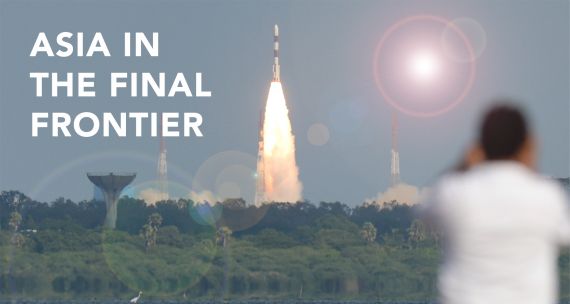On a late December evening in 2022, as the sun dipped below the horizon over the Korean Peninsula, a brilliant streak of light tore through the twilight sky, captivating and confounding onlookers in South Korea, China, Japan, and Russia. Mistaken for an unidentified flying object by many observers, this luminous phenomenon was a secret solid-fuel satellite test launch by the South Korean military, conducted at a critical moment in the intensifying satellite rivalry between North and South Korea. The spectacle not only revealed advancements in South Korea’s ambitious military satellite plan, referred to as the ‘425 Project,’ but also presaged a future in which the two Koreas strive to establish a firm foothold in space.
The previous year, at North Korea’s Eighth Party Congress, leader Kim Jong Un emphasized the need to secure reconnaissance satellite capabilities. By November 2023, North Korea had reached a milestone of its own with the successful launch of its first military reconnaissance satellite, the Malligyong-1. Shortly thereafter, on December 2, 2023, South Korea followed with its first military reconnaissance satellite launch, utilizing a Falcon 9 rocket from the Vandenberg Space Force Base in the U.S.
While these space programs are primarily driven by mutual competition, they also reflect the two countries’ broader ambitions, including enhancing their technological autonomy, bolstering national security, expanding the sophistication of their psychological operations, and positioning themselves as key players in the global space race. These developments have been shaped by global geopolitics, namely, Russia’s invasion of Ukraine — a conflict that has disrupted global alliances, prompting South Korea to shift away from Russia in search of alternative space partners, such as SpaceX (U.S.) and Canada.
Meanwhile, North Korea has drawn closer to Russia. These geopolitical shifts are intersecting with the rapidly rising strategic importance of space technology to both Koreas as they strive to outpace each other while simultaneously pursuing a broader set of national interests.
North Korea’s transition to active space player
North Korea has long been a relatively passive space actor, relying on traditional concealment tactics — camouflage, nighttime operations, underground facilities, mobile launchers, adverse weather exploitation, and decoys — to evade satellite observation. These methods aim to complicate or mislead surveillance efforts by, for example, disguising critical facilities, moving missile launchers to thwart continuous tracking, and exploiting underground or underwater environments to reduce visibility to both optical and radar imaging. Other projects announced at Pyongyang’s Eighth Party Congress — such as developing nuclear submarines, conducting underground nuclear tests, and utilizing mobile intercontinental ballistic missile (ICBM) launchers — are similarly designed to complicate satellite tracking and monitoring.
However, technological advancements in radar, infrared sensors, and data analysis are undermining the effectiveness of these counter-surveillance strategies. As a result, Pyongyang is not only employing more sophisticated methods to further confound satellite monitoring, such as underground nuclear tests and mobile ICBM launchers, but is also shifting to a more active space posture. This transition appears both reactive, as its traditional hiding tactics become obsolete, and strategic, enabling North Korea to develop its own surveillance capabilities and assert greater influence in the evolving security landscape on the Korean Peninsula.
South Korea’s ‘425 Project’ and its goals for space autonomy
South Korea’s ‘425 Project, launched in 2014, seeks to deploy a five-satellite military reconnaissance constellation by 2027 — including four synthetic aperture radar satellites and one electro-optical/infrared satellite — to provide round-the-clock, all-weather monitoring of North Korea’s nuclear and missile activities. The second satellite, launched in April 2024, and the third, launched on December 21, 2024, with the full constellation expected to refresh images every two hours, have already bolstered South Korea’s pre-emptive strike and missile interception capabilities. Crucially, it also reduces South Korea’s reliance on U.S. intelligence assets by enabling Seoul to conduct independent surveillance without exposing its surveillance plans or intelligence assets by requesting satellite imagery from the U.S. Overall, the ‘425 Project’ symbolizes South Korea’s pursuit of strategic autonomy and its emergence as a key player in space security.
The strategic value of surveillance satellites
The strategic value of military reconnaissance satellites extends beyond intelligence gathering: they serve as potent tools for psychological operations and deterrence. A vivid illustration is South Korea’s National Intelligence Service (NIS) publicly releasing satellite images of Russian vessels entering North Korean territorial waters, reportedly to ship North Korean soldiers to Russia. By making these images available, South Korea not only showcased its advanced surveillance capabilities but also sent Pyongyang and the international community a clear message about its technological prowess.
Similarly, South Korea has leveraged high-resolution satellite imagery to disclose detailed views of significant landmarks in Pyongyang. These disclosures are strategic, aiming to exert psychological pressure on the North Korean regime by demonstrating that even their most revered sites are under close observation. For its part, North Korea has also recognized the potential for psychological warfare: it has released low-resolution satellite images of the Seoul metropolitan area and claimed to track the arrival times of U.S. aircraft carriers docking at the port of Busan, one of South Korea’s southernmost cities.
Satellites have become extensions of the two Koreas’ military strategies, enhancing their ability to pre-empt threats and project power without direct confrontation. This dynamic adds a layer of complexity to the regional security environment, where the race for technological supremacy in space has tangible implications on the ground.
Shifting space dynamics following Russia’s invasion of Ukraine
Developing reconnaissance satellites has been a formidable challenge for both North and South Korea, marked by hurdles in launch-vehicle technology, orbital insertion, and advanced optical systems. Historically, South Korea leaned on Russia for technological assistance; in 2007, through the ‘Brown Bear Project’ — a repayment of economic co-operation loans in kind— Seoul began acquiring Russian military hardware such as helicopters and tanks. This collaboration extended to space technology, where Russia aided South Korea in developing first-stage rocket propulsion systems for the Korea Space Launch Vehicle. Meanwhile, North Korea endeavoured to develop surveillance satellites independently, leveraging its experience from the development of ICBMs to bolster its asymmetric military capabilities beyond nuclear weapons. Despite these efforts, however, both countries have struggled to make satisfactory progress.
Russia’s invasion of Ukraine in 2022 dramatically shifted the geopolitical dynamics of collaboration on space technology. As Moscow’s relationship with North Korea warmed, its co-operation with South Korea diminished. Furthermore, international sanctions against Moscow impeded Russia-South Korea military space co-operation, prompting Seoul to accelerate the development of indigenous launch-vehicle technologies capable of placing satellites over one tonne into orbit.
The destruction of the Antonov An-225, one of only three aircraft in the world capable of transporting satellites, in the war in Ukraine significantly increased satellite transportation costs. Faced with these challenges, South Korea abandoned plans to launch military satellites from Russia, opting instead to turn to SpaceX in the U.S. South Korea’s Ministry of National Defense further committed to building domestic military satellite launch infrastructure, viewing it as more economically advantageous.
For North Korea, the evolving geopolitical landscape presents both obstacles and opportunities. While a series of failed reconnaissance satellite launches left Pyongyang seeking external assistance, the possibility of receiving advanced technology from Russia in exchange for sending troops to support Russia’s war effort in Ukraine has increased the likelihood of North Korea successfully deploying reconnaissance satellites. Such advancements would significantly enhance Pyongyang’s surveillance capabilities, further escalating the satellite rivalry on the Korean Peninsula.
Rivalry in orbit
Before South Korea successfully launched its third military reconnaissance satellite on December 21, 2024, South Korea’s Director of National Security, Shin Won-sik, indicated that while there were no signs of an imminent North Korean reconnaissance satellite launch, preparations were in their final stages, with a high likelihood of a launch occurring soon. Meanwhile, U.S. Secretary of State Antony Blinken stated after the U.S.-South Korea Ministerial Meeting on January 6, 2025, that credible information pointed to Russia sharing advanced satellite technology with North Korea, potentially accelerating Pyongyang’s own satellite ambitions. The U.S. Air Force also deployed an RC-135V Rivet Joint, a reconnaissance aircraft, over the Yellow Sea on January 9, 2025, a move reminiscent of similar intelligence-gathering flights before North Korea’s previous surveillance satellite launches. If Pyongyang proceeds with another military satellite launch soon, it could mark yet another escalation in the Korean Peninsula’s intensifying space race.
Meanwhile, South Korea has been enhancing its surveillance and reconnaissance capabilities since 2020 through the development and deployment of a microsatellite constellation. Consisting of 11 satellites under 100 kilograms each, this constellation delivers high-resolution imagery of the Korean Peninsula and its surrounding waters, enabling near-real-time monitoring of North Korea, effectively filling gaps in existing military reconnaissance satellite coverage in addition to enhancing maritime security and policing and preventing disaster threats.
North Korea had announced ambitious plans to launch three reconnaissance satellites in 2024 but has yet to succeed with even a single additional launch following its initial success in November 2023. After a failed attempt in May 2024, no further launch activity has been observed, raising questions about its ability to meet its stated objectives even within 2025. Despite these setbacks, North Korea has emphasized its commitment to continuing its satellite development and launch efforts, citing precedents set by allied countries such as China and Russia. This rhetoric suggests a strategic effort to maintain legitimacy for future launches, even if immediate progress remains stalled.
Challenges, constraints, and possibilities for collaboration with Canada
Despite its notable advancements, South Korea faces notable hurdles in its bid to become a leading spacefaring country. The country’s budget for space projects, amounting to just 0.9 per cent of the U.S.’s 2022 space budget, remains insufficient, while internal power struggles between the Ministry of National Defense and the NIS over control of military space initiatives complicate decision-making on military space initiatives. To overcome these constraints, South Korea has recognized the importance of international collaboration and is actively exploring partnerships with Canada, particularly with Montreal’s space industry, as a model for advancing its aerospace materials and technologies. Montreal’s success in fostering innovation and commercialization in the space sector offers valuable lessons for South Korea as it seeks to bolster its domestic capabilities and global competitiveness.
South Korea’s southeastern Gyeongsang Province, home to the Korea AeroSpace Administration in Sacheon, has prioritized expanding its aerospace sector through strengthened ties with Quebec. Recognizing parallels in their roles within their respective national aerospace industries, both regions are pursuing collaboration via Quebec’s renowned aerospace cluster, Aéro Montréal, which is part of the Global Aerospace Cluster Partnership.
Both provinces aim to exchange market intelligence, develop solutions to shared industry challenges, and encourage mutual benchmarking. Key initiatives include optimizing educational programs — such as student exchanges — fostering co-operation among small and medium-sized enterprises, and driving innovation through joint research with leading institutions. These efforts also encompass knowledge-sharing and collaborative projects in the civilian aerospace sector, with a focus on technological advancements and industry growth.
South Korea’s collaboration with Canada builds on the South Korea–Canada Comprehensive Strategic Partnership. The ‘action plan’ under this framework leverages the Agreement for Science, Technology, and Innovation Cooperation and the Canada–Korea Joint Science and Technology Cooperation Committee (JSTCC) to bolster ties in priority areas, particularly aerospace technologies. The JSTCC continues to provide a platform for dialogue on emerging technologies, presenting South Korea with critical opportunities to address its budgetary and organizational constraints while strengthening bilateral relations.
By tapping into Canada’s advanced aerospace ecosystem, especially in Montreal, South Korea aims to accelerate its path toward space autonomy and elevate its role in the global aerospace landscape. This strategic partnership not only enhances South Korea’s technological capacity but also positions it as a reliable partner for Canada in global space governance, furthering shared goals in innovation and security.
• Edited by Erin Williams, Senior Program Manager, Vina Nadjibulla, Vice-President Research & Strategy, and Ted Fraser, Senior Editor, APF Canada





